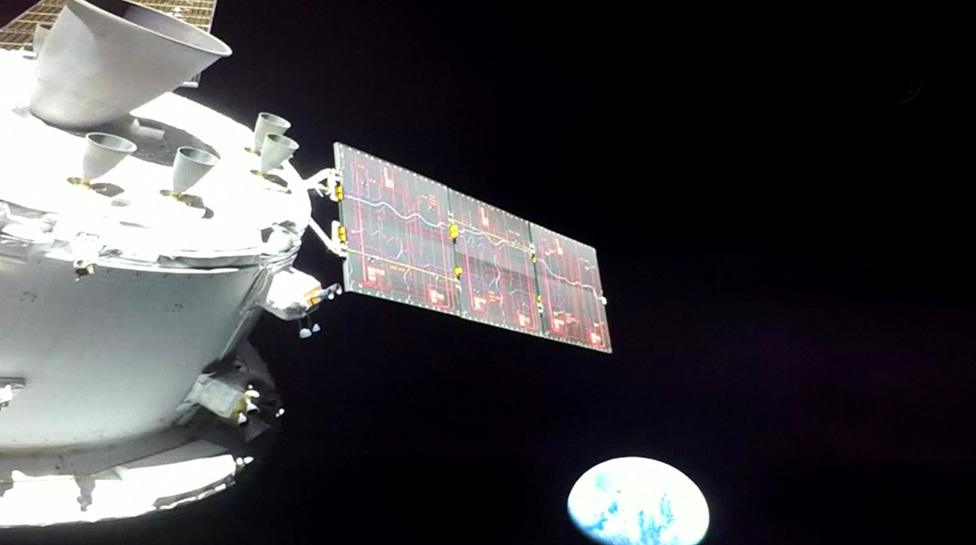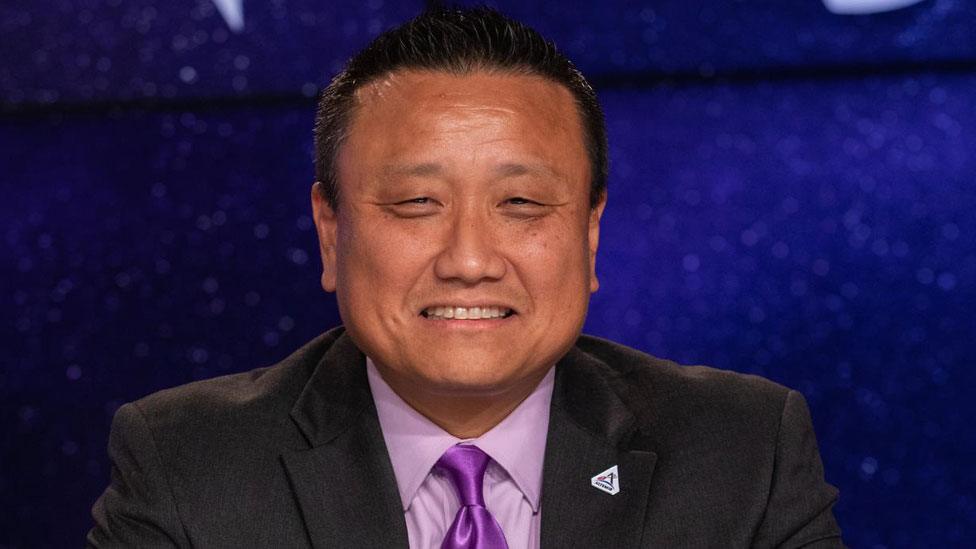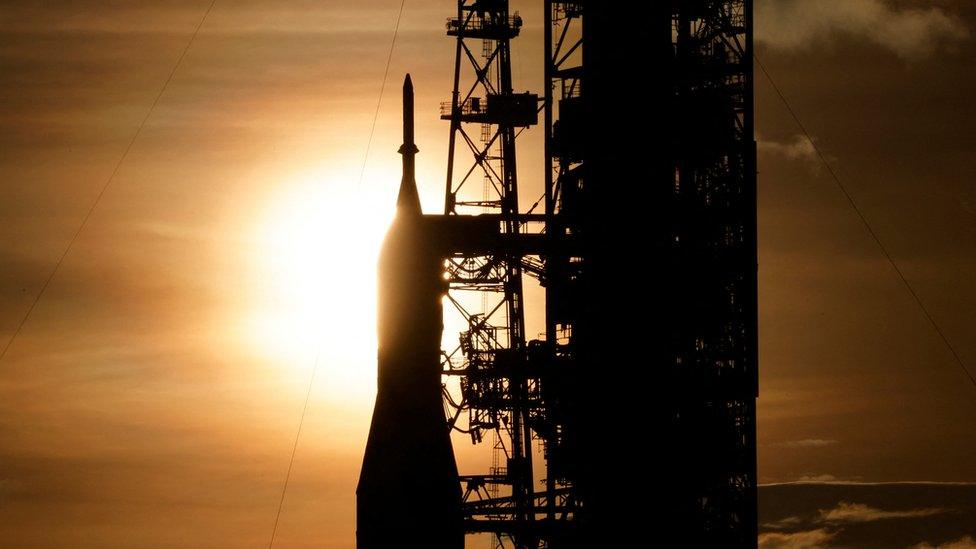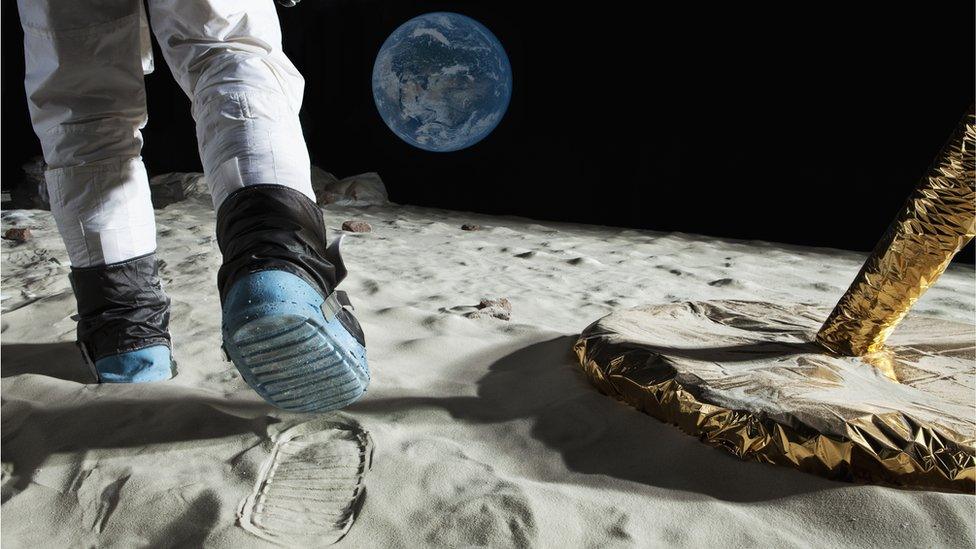Nasa's Artemis: Spacecraft arrives at the Moon
- Published
- comments

This selfie of the Orion spacecraft was snapped as it was travelling towards the Moon
Attention space fans... Nasa's Artemis space rocket has arrived at the Moon!
It's really exciting because a human spacecraft hasn't been sent to the lunar surface for 50 years.
This Artemis I mission is not crewed by astronauts, but this launch is part of the US space agency's wider project to send humans back to the Moon.
The last astronauts to visit it were the crew on the Apollo 17 rocket in December 1972.
Nasa flight director Zebulon Scoville said: "This is one of those days that you've been thinking about and dreaming about for a long, long time.
"This morning, we just saw the Earth set behind the Moon as we take the next human-rated vehicle around the Moon, preparing to bring humans back there within a few years. This is a game-changer."
What's happening?

The Orion capsule looks back towards the Earth
The special spacecraft called the Orion capsule is sweeping 80 miles (130km) above the lunar surface, before entering into a larger orbit around the Moon.
The vehicle was out of contact for a while during orbit which began at 12:44pm on Monday 21 November on the far side of the Moon.
The Artemis team on the ground said they would be "waiting intently" for the signal, and so far the mission had gone better than their expectations since last week's launch.
The spacecraft will zoom over the landing sites of Apollo 11, 12 and 14 as it gets closer and it will start to send back useful data and footage of the Moon.
When did the rocket blast off?
WATCH AGAIN: Nasa's Artemis I rocket blasts off
The 100m-tall Artemis rocket blasted off from the Kennedy Space Center in Florida on Wednesday 16 November 2022; it is the most powerful rocket Nasa has ever built.
It placed Orion on a path towards the Moon.
Mr Howard Hu, who leads the Orion lunar spacecraft programme for the agency, said it was the first step towards long-term deep space exploration, for not just the United States but for the world.
He said: "I think this is an historic day for Nasa, but it's also an historic day for all the people who love human space flight and deep space exploration.
"I mean, we are going back to the Moon, we're working towards a sustainable programme and this is the vehicle that will carry the people that will land us back on the Moon again."
What are they finding out on the journey?

Manikins are strapped in for the ride and Nasa's mascot Snoopy is floating free in the cockpit of the crew capsule
The capsule has already sent back several selfies, like the above pic, during its trip.
Because this is a test flight, no astronauts are on board this time. Three manikins (wooden models of humans) covered in thousands of sensors, are inside the rocket instead.
"Those sensors are getting an idea of whether the environment is going to be OK for people," explained Nasa astronaut Zena Cardman.
This is a really important mission because if this flight goes well astronauts will be onboard the next one, which will orbit around the Moon.
The third Artemis mission will then take the first woman and first person of colour on to the surface of the Moon.
CBBC's Shaun the Sheep has a spot on the ship and Nasa's mascot Snoopy, is also floating free in the cockpit of the capsule.
The Orion capsule is due to return to Earth on 11 December.
Why does Nasa want to send people back to the Moon?
A big reason for going back to the Moon is to discover whether there is water at the satellite's south pole.
This is because it could be converted to provide a fuel for craft going deeper into space - to Mars, for example.

Howard Hu is in charge of the Orion spacecraft
"We're going to be sending people down to the surface and they're going to be living on that surface and doing science," Mr Hu said.
"It's really going to be very important for us to learn a little bit beyond our Earth's orbit and then do a big step when we go to Mars.
"And the Artemis missions enable us to have a sustainable platform and transportation system that allows us to learn how to operate in that deep space environment."
If you cannot see the quiz, click here.
- Published4 September 2022

- Published16 November 2022

- Published20 November 2022

